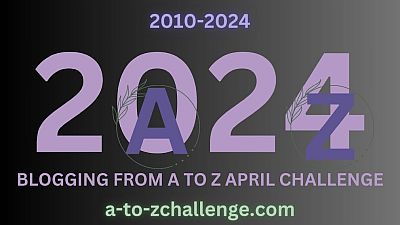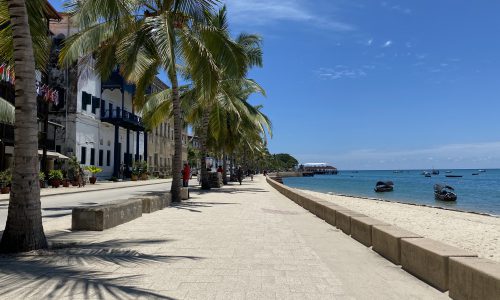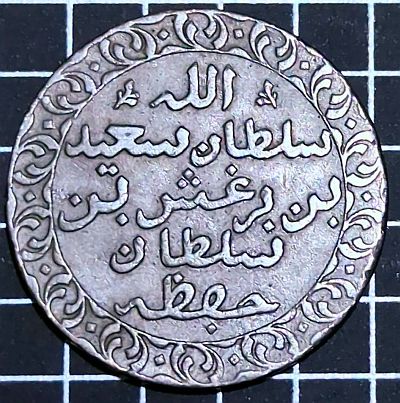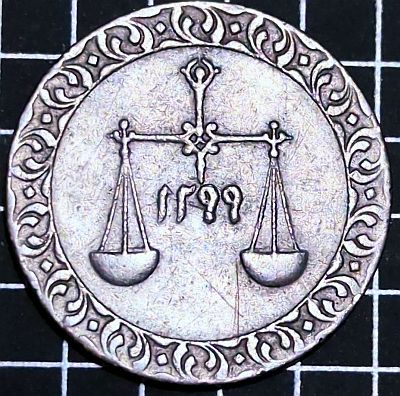A KM1 coin from a small African island.
Here it is! The final entry, Day 26, “Z” of the Blogging from A-Z April Challenge!
Z = Zanzibar.

Zanzibar
The area known as Zanzibar has been home to humans for at least 20,000 years. Archaeological evidence includes Microliths (small tools used as spear points in the later stone age), found on the island. The Sultanate of Zanzibar was an East African Muslim state between 1856 and 1964.
According to Italian explorer Leo Africanus, in his 1550 book “Description of Africa”, the entire east coast of Africa, from (what is today) Kenya to Mozambique, was named Zanzibar.
From 1698 the Sultan of Oman ruled the islands of Zanzibar from Muscat, his capital, through appointed governors and occasional armed raids to put down minor rebellions. Zanzibar was a major transportation hub for African slaves heading to Oman.

(Image of a beach in Zanzibar, from OnSafari.com)
In the late 1700s, Oman signed a treaty with Britain, which aided Oman in keeping the Persians at bay, and in return, Oman aided British interests in India. In the early 1800s, clove production became a major industry in Zanzibar. As well as continuing the movement of slaves to Oman, the early 1800s saw the trade in Ivory to the United States of America boom as African ivory was more pliable and less brittle than Asian ivory.
In 1840, Sultan Said moved his capital to Zanzibar, using the title “Sultan of Zanzibar and Oman”. In 1856, after Said’s death, his son Thuwaini became Sultan of Muscat and Oman. Another son, Majid bin Said became Sultan of Zanzibar, which formally separated from Oman in 1861.
By the 1860s, the slave industry had reached its peak, and clove production was declining after over supply. There was a greater interest in the production of coconut and sesame seed oils, mainly for export to France. There was also a revival of sugar production, and rubber plantations were established along the coast. Lack of sanitation caused regular outbreaks of dysentery, and a major hurricane in 1872 destroyed much of the island. During the same decade, Sultan Barghash increased links with Britain and introduced many improvements to the country. With the opening of the Suez Canal in 1869, a monthly steamship mail service commenced. Electricity, fresh water, telephones, and a police service were also introduced.
Obverse

The obverse contains five lines of Arabic text in a decorative border. The text translates to: “Sultan Sa’id ibn Barghash ibn Sultan. May Allah save him”. The coin is copper, and I have photographed it in strong light to bring out the details.
The coin is listed as KM1, which I enjoy collecting. KM Numbers are the numbering system used by the Standard Catalog of World Coins, originally written by Krause and Mishler. Generally, the smallest denomination of the first issue of coins for a country is denoted as KM1, with the number increasing through denominations and later issues.
Reverse

The reverse contains an image of scales with date in between. The date is in Arabic Numerals, and shows the Islamic year – 1299. This was 1882 in the Gregorian calendar.
Looking for the meaning of the scales, I came across this post from Peter on WorldOfCoins.eu:
“The inspiration for the scales undoubtedly came from East India Company (EIC) coins for the Indian subcontinent, so from a European source. In European symbolism, scales stand for justice. It has become an attribute of Justitia, together with the blindfold and sword. I wonder if the scales have the same significance here. On the EIC coins, there is the word adil (justice) under the scales. Was it put there because the locals would otherwise not understand the symbolism?
If so, how about East Africa? What was the function of the scales? Putting a familiar symbol on the coins, to trigger a “yes, right, good coin, like those others” reaction? A symbol of justice, so well-known that the word adil was not or no longer necessary? Or had it become something else, like a symbol for trade and markets, colourful, vibrant places, where plenty of food is available and you can meet people you see nowhere else?”
An English and Indian connection could make sense, as Sultan Barghash did spend two years in British India. Do you know more about the design? Please do let us know!
More about Zanzibar
A couple of very interesting short notes from after this coin’s time:
- On the 27 August 1896, the shortest war in history was waged in Zanzibar. The Anglo-Zanzibar War between the United Kingdom and the Zanzibar Sultanate lasted roughly 45-minutes before a ceasefire was called.
- Freddie Mercury, lead singer of Queen, was born Farrokh Bulsar in Zanzibar in 1946, and a museum dedicated to the world legend is now located in the house where Freddie and his family lived until they moved to England in 1963.
- Today, Zanzibar is part of the United Republic of Tanzania.
That was the last entry for the 2024 Blogging from A to Z April Challenge. Thank you for following my journey through it this year. How have you found the challenge? Did you take part yourself? Let us know what you think and whether you’d like to see a similar thing in 2025.


Leave a Reply